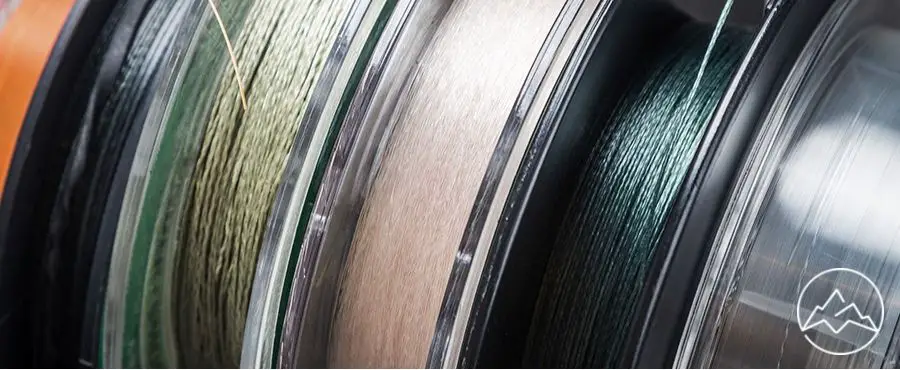In the angler world, the type of fishing line you use is just as important a factor in success as the type of reel, rod, or bait. Choosing the right fishing line for the right environment is crucial, and many beginner anglers make the minor mistake of only using one type of line.
Fishing line types
Across the fishing world, there are four types of fishing lines that you can use. There’s no one type that is superior to the others. Instead, each type of fishing line has certain advantages and disadvantages.
Monofilament
The monofilament fishing line is one of the most common types that you’ll see across both beginner and experienced anglers. It’s made of a single line of nylon fiber, which is then wound onto a spool.
Monofilament lines can be mixed with other polymers to give them certain colors or refractive properties. This can allow the monofilament line to become florescent for night fishing, for instance. Monofilament fishing lines have a decent amount of stretch and flexibility, and their diameter-to-test strength ratio is about average.
These are solid, versatile fishing lines for a variety of scenarios. Their adaptability is what made them so popular for so long.
Copolymer
Copolymer lines are similar to standard monofilament lines and are generally thicker on average. They have better abrasion resistance and can usually be thought of as a “heavy-duty” version of standard monofilament lines.
Fluorocarbon
Fluorocarbon fishing lines are similar to monofilament lines but are much less dense and have better abrasion resistance. Fluorocarbon fishing lines are much harder for fish to see; this can be advantageous in crystal-clear water when the presence of an obvious line might drive away fish that would otherwise bite your bait.
Fluorocarbon lines are also really great for transmitting biting and contact pressure up the line, letting you know when it’s time to start to reel.
Fluorocarbon lines are a little more rigid than monofilament, so they’re a little more durable and abrasion-resistant overall. However, this lack of stretchiness makes it harder to manage for many anglers, and it sinks more consistently. This can be an advantage or disadvantage, depending on your goal.
Braid
The braided fishing line uses woven strands of different materials that form an extremely durable length of the line. Most of the materials used are synthetic compounds like Spectra or Dacron.
Braided fishing lines don’t tend to stretch very well. As a result, they are incredibly strong and possess fantastic abrasion resistance compared to the other types of lines. For this reason, they’re optimal fishing lines for fighting heavy or strong fish that resist being pulled in, and are often paired with spinning reels.
However, braided fishing lines have a disadvantage in that they are much easier to see so some fish may stay away. Braided fishing lines can also easily become wedged into cracks or between rocks, so you have to be careful about the environment you use this type in.
Headed on a fishing trip soon? Check out our top picks for the best baitcasting reels.
Which is best for which types of situations?
As you might expect, each of the above fishing line types is ideal for different situations.
- Monofilament: The monofilament line is extremely versatile. It’s very castable and isn’t as visible as a braided line so you can use it in most fishing scenarios with at least moderate success. You should use it for floating baits due to its natural buoyancy – it’s perfect for topwater fishing. Its stretchiness will also allow you to wrestle with larger bass and still hope for success.
- Copolymer: Since the copolymer line is a heavier-duty version of the monofilament line, switch it out for this type when you expect to go after heavier or stronger fish but still want greater floating ability than that offered by the braided line.
- Fluorocarbon: The fluorocarbon line is best used in calm or still waters that have a lot of optical clarity. Fluorocarbon lines are naturally hard to see by most types of fish, so they can be great for luring out hesitant species that stay away from obvious lines like braided types. Fluorocarbon is also great if you need to be particularly sensitive to small bites from potential catches or you are looking for drop shots or a line to pair with jigs.
However, fluorocarbon tends to sink very easily, so don’t use it for floating lures or topwater. You should also avoid using fluorocarbon line if there’s a big chance that it will get caught easily on tall grass or weeds. - Braided: The primary advantage of braided lines is overall durability. It has incredible strength despite the small diameter of the line. It’s also really easy to cast. Should use braided fishing lines when you need to tackle heavy fish that will fight you wildly as you reel them in, or when water visibility is so low that the obviousness of your line won’t matter to any potential catch.



